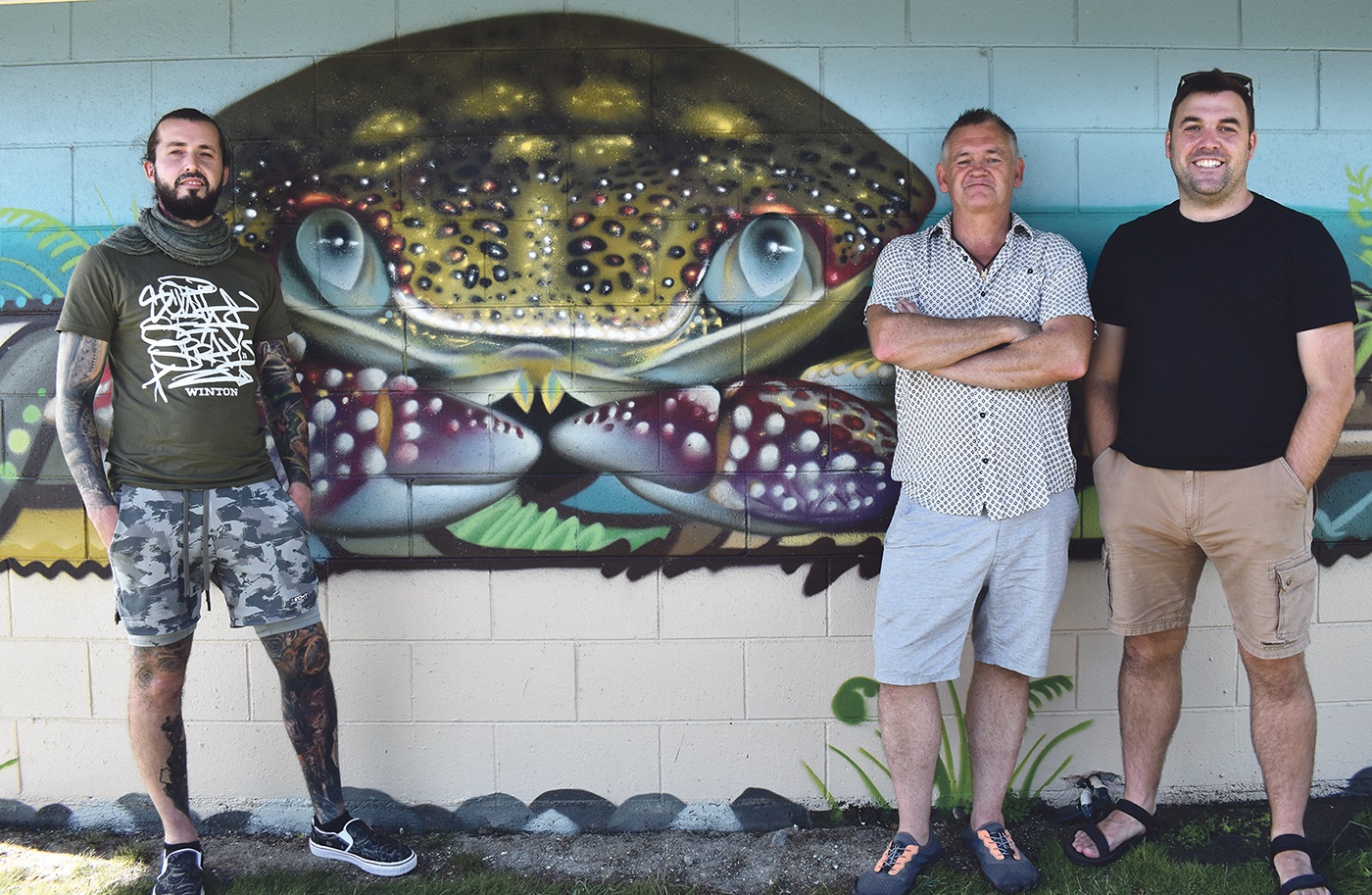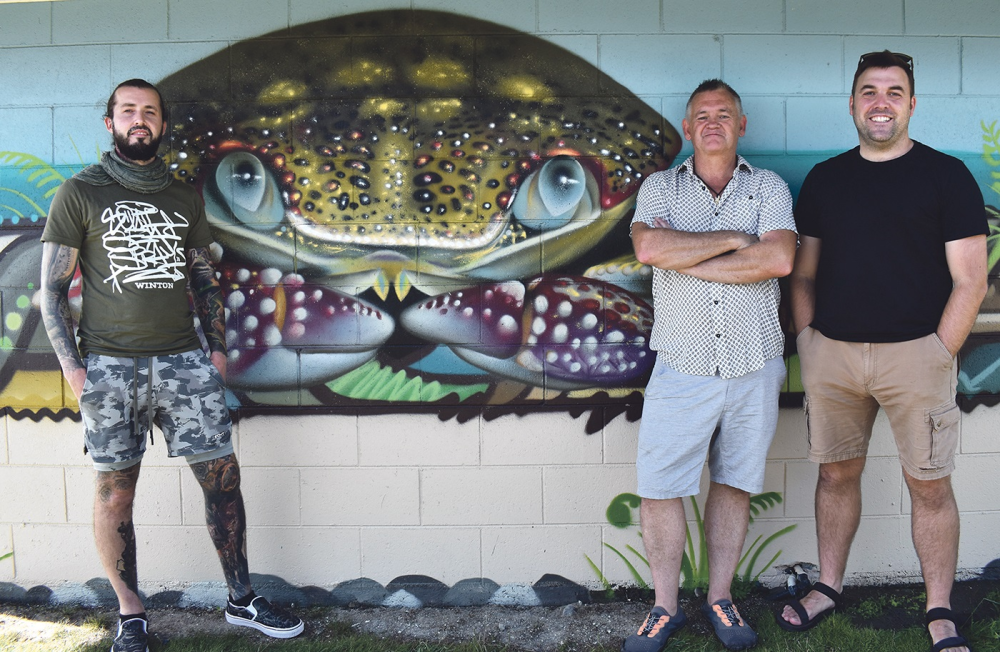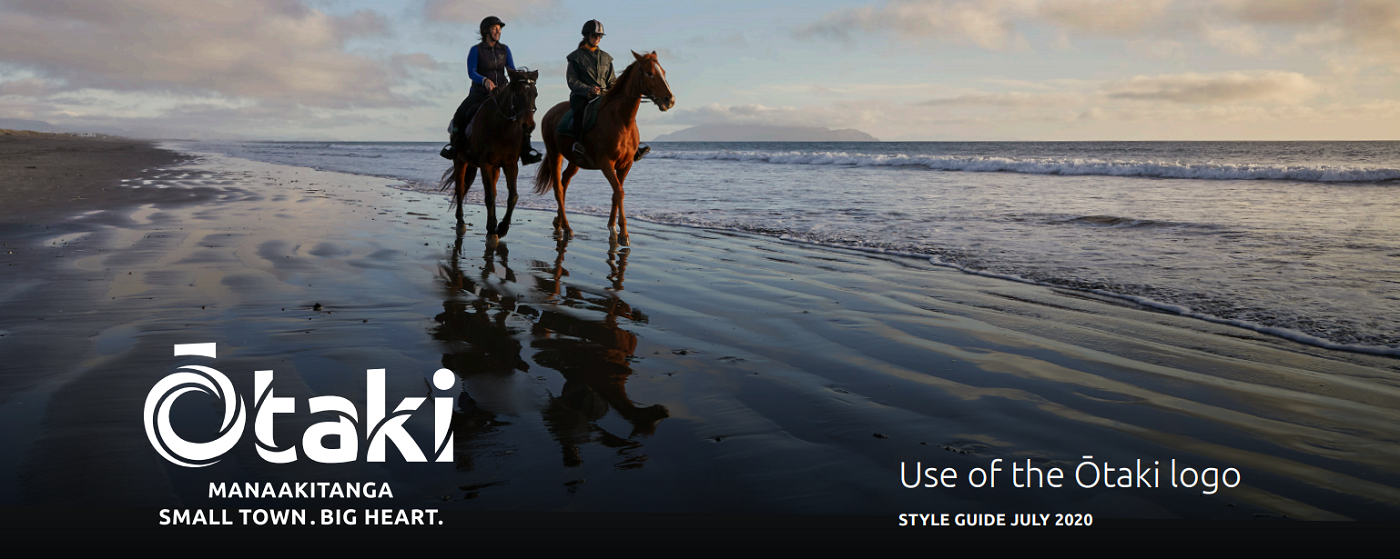
Te Horo Beach has newly upgraded toilet blocks that would be the envy of any small beach settlement.
Most striking in the upgrade is colourful work by a Palmerston North artist known simply as Swiftmantis, and artist Sean Duffell. The collaboration has produced unique wrap-around murals picking up on themes submitted by the Te Horo community, including local wildlife and distinctive species of native flora and fauna that reside along the coastline.
Swiftmantis and Sean worked on the mural during January using different, but complementary styles. Switmantis painted a realistic native beach crab, a kingfisher, and the rare New Zealand dotterel found at at Te Horo Beach. Sean’s graphic pattern-work includes Kāpiti Island and Te Horo Beach’s unique stony ridges.

From left, artist Swifmantis with one part of his mural at the Te Horo Beach toilets, with Waikanae Community Board deputy chair Michael Moore and Friends of Te Horo Beach secretary Rupert Randall. Below right, kaumātua Rangimoana Taylor at the opening ceremony.
Photo Ōtaki Today
The project to enhance the previously drab 1960s toilet block was driven by local resident and deputy chair of the Waikanae Community Board, Michael Moore, in collaboration with the Friends of Te Horo Beach.
“We wanted the mural’s environmental themes and images to inspire and ignite conversation and action along our coastal beachside community to think about threatened species, and what we can do collectively and individually,” Michael says. “The Mangone Lagoon and stream/river mouth area, and adjoining wetlands along the beach front are seriously threatened.
“The area needs substantial more protection from human interference. Dogs off leads and vehicles that access the beach illegally through the stream are two serious problems.”
In addition to the mural, Kāpiti Coast District Council has upgraded the facilities with interior painting, a new macrocarpa picnic table (that was oiled and stained by local residents, installation of a new outdoor shower, a concrete path and a rope barrier to keep vehicles off a new grass area.
The artwork element of the project cost $12,000, which was paid for by a Waikanae Community Board grant and KCDC’s Public Art Fund. The other work was from KCDC’s operational budget.
LATEST POSTS
- Concerts line up for rotunda
- No respite for ‘cone town’
- Trout spawn in Winstone Lakes
- Rāhui Rd next in line for road works
- ‘Monkey’ back to old tricks
- Ōtaki dominates awards night
- Sam risks all for Gaza
- Heniti ‘proud to call Ōtaki home’
- Infrastructure works keep rolling on
- An ONZM for arts, sport, heritage
- Trappers aim for predator free Te Horo
- Cannes award ‘dedicated to Ōtaki’
- Te Horo hall wants land for car park
- Beach burglars pinch trailer and tools
- Toilet vandalism ‘tragic, sad’
- Fifty years for Ōtaki fire chief
- Idiots in cars’ block highway
- Oiroa Kaihau – a focused career soldier
- ‘Aunty Gabe’ Rikihana gone at 98
- Te Horo Hall opens for ‘future generations’
- Demographic shift offers ‘new opportunities’
- Quirky artist’s exhibition delights family
- Kite magic returns to Ōtaki skies
- Crowds out for Waitangi Day
- Marian retires from women’s club
- Moy developers seek judicial review
- Charlie beats the odds
- Rescuers seek funds
- Ōtaki Rotary winds up after 60 years
- Czech president visits Te Horo kilns


